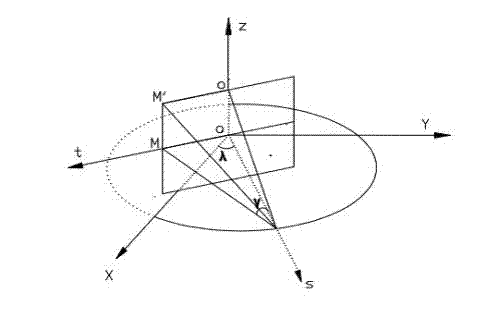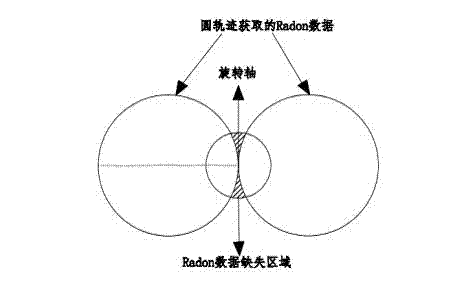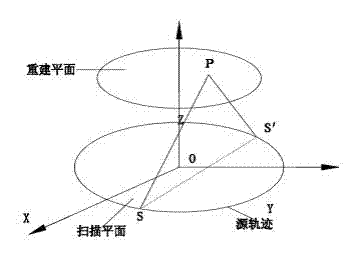Reconstruction algorithm for back projection weight cone-beam CT (Computed Tomography)
A back-projection and weighting technology, applied in computing, image data processing, instruments, etc., can solve the problems of missing Radon data, not considering shadow areas, serious cone beam artifacts, etc., to improve the quality of reconstructed images, fast calculation, noise reduction insensitive effect
- Summary
- Abstract
- Description
- Claims
- Application Information
AI Technical Summary
Problems solved by technology
Method used
Image
Examples
Embodiment Construction
[0024] The present invention is directed to an approximation algorithm for cone beam data. These algorithms are used in the reconstruction of images produced by CT devices. Examples of the present invention are given below.
[0025] A back-projection weighted cone-beam CT reconstruction algorithm, including three steps of CT projection data weighting, filtering, and back-projection reconstruction. The back-projection reconstruction is performed using formula (1), considering the impact of Radon missing data on the reconstruction results , adding ray backprojection weights based on distance weight and conjugate ray continuity in the backprojection process to compensate for the missing data of Radon, thereby improving the inherent cone beam artifact problem of the FDK algorithm under the circular trajectory and expanding the reconstruction range. Improve reconstruction quality.
[0026] The ray backprojection weighting coefficient w(t, q(z)) is expressed as
[0027] ...
PUM
 Login to View More
Login to View More Abstract
Description
Claims
Application Information
 Login to View More
Login to View More - R&D
- Intellectual Property
- Life Sciences
- Materials
- Tech Scout
- Unparalleled Data Quality
- Higher Quality Content
- 60% Fewer Hallucinations
Browse by: Latest US Patents, China's latest patents, Technical Efficacy Thesaurus, Application Domain, Technology Topic, Popular Technical Reports.
© 2025 PatSnap. All rights reserved.Legal|Privacy policy|Modern Slavery Act Transparency Statement|Sitemap|About US| Contact US: help@patsnap.com



